Categories
Latest Updates
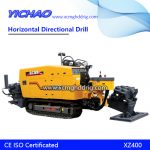
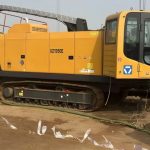
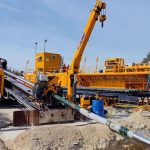
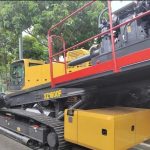
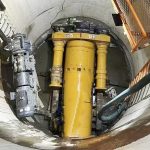
Trenchless construction: 11 technical difficulties of horizontal drilling
Stuck drilling is a common technical difficulty in hole reaming. In case of stuck drilling, analyze the cause and deal with it.
1. When colliding with the underground pipeline, the drill bit is stuck, the drill bit is pulled out, the drill pipe is pulled back, the drill rig is shifted, and the pilot hole is redone.
2. Blocking of bricks and stones in miscellaneous fill: loosen the torque, turn the drill bit, and slowly expand the hole; block of large rocks and concrete blocks in miscellaneous fill: Try to withdraw the drill bit, and move the drill again. Or dig out rocks and continue to ream. Don’t do it recklessly, otherwise the drill pipe will be twisted and the drill tool will be lost in the hole.
3. Large-diameter drill bit reams and encounters a hard clay layer, causing frequent sticking, slowing down the reaming speed, increasing the amount of mud, and sometimes dragging a drill pipe back, which takes 40 minutes.
4. When the drill bit meets the root of the tree, it gets stuck, loosen the torque, slowly expand back, and then expand again after passing through the root of the tree to smash the root to prevent obstacles in laying the pipe.
The soft soil layer expands the hole, and the diameter of the hole is prone to shrinkage. After the drill pipe is removed, the water in the hole pours out from the drill pipe, indicating that the diameter of the hole is severely reduced. When the diameter is severely reduced, the laid pipe will be squeezed and deformed, and the laid pipe may even become stuck. In case of severe diameter reduction, use solid-phase mud to protect the wall to balance the pressure in the hole and maintain the hole. Or increase the first-level drill bit to expand the hole, then clear the hole and lay the pipe. Choose PE and PVC pipes with high hardness and strong resistance to lateral pressure. If the diameter is slightly reduced, the pipe can be laid by clearing the hole once more.
Sandy clay layer, sand layer, loose backfill soil layer is easy to collapse holes, collapse holes to bury drills, stuck drills, stuck pipes, and cause pavement cracks to sink. Use solid-phase mud and heavy colloidal solid-phase mud for wall protection, which can effectively prevent hole collapse. If the hole collapses at the place where the rocks are piled up, the hole can only be expanded after the rocks are removed.
Drilling and laying pipes in this kind of stratum, after the hole is formed, the soil in the hole expands, the mud in the hole increases, the hole diameter becomes smaller, and the laying pipe is easy to be flattened. Use high-quality solid-free wall protection to reduce mud loss and reduce the contact between the hole wall and water. Expanding one-stage reaming and cleaning the holes twice can effectively prevent the formation from expanding and squeeze the pipe laying.
In the loose backfill soil layer, the groundwater level is low, and the sandy silt layer, silt layer, sand layer, soft soil layer at the bottom of the river bed, and sand layer are expanded. The mud does not return from the orifice, but leaks from the hole, increasing the mud concentration and viscosity, forming a mud skin on the hole wall to prevent leakage, and effectively preventing mud leakage. When crossing the river, if the mud is leaking but can’t stop the leakage, just let it go.
When reaming the hole and dragging the pipe laying, it is common for mud to seep out of the ground from the hole. The reason for the mud seepage is that the residual mud debris in the reamed pipe laying hole blocks the drilling hole, and the mud cannot return from the hole. The mud forms a high pressure in the hole and seeps out from the ground. The second is that the stratum is loose, leaving a passage for the mud, and the mud seeps out of the ground along the passage. Under normal circumstances, it does not matter if the mud seeps from the ground. In some specific environments, special attention should be paid. The mud should not seep from residential houses, nor from fish, shrimp, or crab ponds. The measure to prevent mud seepage is to increase the drilling depth. The original design depth of 6 meters can be increased to 9 meters, and the original design depth of 9 meters can be increased to 12 meters. Improve the structure of the drill bit, stir the mud in the drilling hole as much as possible, and increase the viscosity, concentration and flow rate of the mud appropriately, and increase the mud wall protection, suspension and chip removal capabilities. A complete channel is formed in the borehole, and the mud flows back out of the hole unobstructed.
In the process of dragging and laying pipes, drilling is often stopped due to various reasons, such as welding pipes in the middle, repairing the protective layer in the middle, and municipal interference. It is necessary to stop drilling and pull back to lay the pipe. The mud can not be stopped when drilling is stopped, so that the mud continues to circulate in the hole to prevent increasing the drag force of the laid pipe and prevent the pipe from being buried. Especially for sandy layers, the mud cannot be stopped even when drilling is stopped. If you are forced to stop the mud, feed the thick and sticky mud before stopping the drilling, and then stop the mud. After re-drilling, pump the mud for ten minutes. After the mud has returned well from the orifice, drag the pipe back again.
The greater the torque of the drilling rig, the higher the speed, and the higher the reaming efficiency. Under the conditions of the rated torque and speed of the drilling rig, the reaming efficiency is directly related to the soil to be reamed, the reaming bit, the quality of the reaming mud and the amount of mud. To improve the efficiency of hole expansion, it is necessary to clarify the soil structure and soil composition, choose a high-efficiency drill bit suitable for cutting the soil layer, deploy the mud suitable for the soil layer and a reasonable amount of mud to expand the hole, and the hole expansion efficiency is high.
The quicksand layer expands the hole. After the hole is expanded, a complete hole cannot be formed, and the quicksand has the characteristics of adsorption force, which causes resistance to the pipe being laid. Use heavy colloidal solid-phase mud to slow down the expansion speed to fully emulsify the mud and quicksand, and the quicksand will suspend in the pores to eliminate the adsorption force of the quicksand. When laying pipes, quicksand flows out of the borehole along with the mud.
The viscous stratum is reamed, and the clay remains in the hole in lumps, making it difficult to mix it into a slurry. When laying pipes, mud blocks are piled up and squeezed, and the pipes are squeezed and deformed. Clear the holes one more time before laying the pipe and then lay the pipe. The deformation of the pipe is small and the test passes. The deformation of the pipe is large, and the pipe is dragged out for repair, and it cannot be repaired and treated as scrap.
There are many mud lumps in the hole, and the collapse of the hole and the shrinkage can easily cause the laid pipe to be stuck in the hole. Before jamming, the dragging pressure gauge gradually rises. When you see the needle rising, pause or slow down the dragging speed and increase the amount of mud to avoid pipe jamming. After the pipe is stuck, adjust the bulldozer and excavator to drag the pipe out. Re-clear the hole and lay the pipe.

